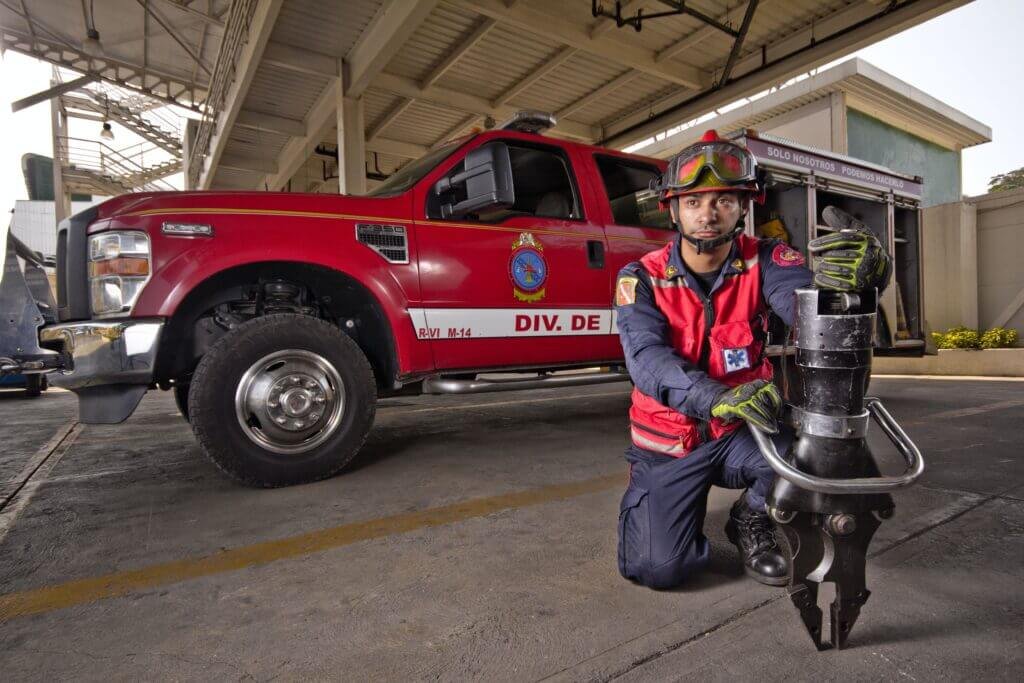Living in a coastal area comes with its own set of challenges, and two of the most pressing ones are coastal erosion and rising sea levels. As you watch the waves slowly inch closer to your property, you might be wondering, “How do I protect my home from these threats?” Fortunately, there are several measures you can take to safeguard your beloved abode from the relentless forces of nature. From implementing natural defenses like dunes and vegetation to exploring engineered solutions such as seawalls and breakwaters, this article will guide you through the different strategies available to protect your coastal home.

Understanding Coastal Erosion and Rising Sea Levels
What is coastal erosion?
Coastal erosion refers to the gradual wearing away or loss of land along the coast due to the impact of natural forces like waves, currents, and tides. It occurs when these forces remove sediments from the shoreline and transport them elsewhere, resulting in the retreat of the land. This process can lead to the destruction of beaches, cliffs, and other coastal features, posing a threat to human settlements and infrastructure.
What are rising sea levels?
Rising sea levels are primarily caused by global warming, resulting in the melting of ice from glaciers and polar ice caps, as well as the thermal expansion of seawater. As sea levels rise, it increases the amount of water flooding coastal areas during high tide, storms, or other extreme weather events. This phenomenon exacerbates coastal erosion and amplifies the risks to homes and communities located near the coast.
The impact of coastal erosion and rising sea levels
Coastal erosion and rising sea levels have significant impacts on both natural and human environments. In addition to the loss of land, erosion can damage coastal habitats and ecosystems, leading to the loss of biodiversity. This, in turn, can affect fish populations, bird species, and other coastal wildlife. Moreover, coastal erosion and sea level rise put human settlements, infrastructure, and economies at risk, with potential consequences such as property damage, increased flood risk, and displacement of communities.
Assessing the Vulnerability of Your Home
Evaluating your home’s proximity to the coastline
To assess the vulnerability of your home to coastal erosion and rising sea levels, it is crucial to determine its proximity to the coastline. The closer your home is to the shore, the higher the risk it faces. Understanding the distance between your property and the coast will help you make informed decisions about the protective measures that may be necessary to safeguard your home.
Examining local topography and geomorphology
Examining the local topography and geomorphology of your area is also essential in assessing vulnerability. Certain areas may be more prone to erosion due to their geographic makeup, such as low-lying coastal plains or areas with loose sediments. Identifying these characteristics will provide insights into the potential risks and help determine appropriate mitigation strategies.
Considering historical erosion patterns
Studying historical erosion patterns in your area can provide valuable information about the long-term risks your property may face. Information on past erosion rates, storm events, and changes in shoreline positions can help you anticipate future threats. Consulting local authorities, geological surveys, or historical records can provide you with the necessary data to make informed decisions about protecting your home.

Implementing Natural and Nature-Based Solutions
Beach nourishment and dune restoration
Beach nourishment involves adding sand or sediment to eroded shorelines to rebuild or widen beaches. It helps absorb wave energy and reduce erosion rates. Dune restoration, on the other hand, involves planting vegetation and implementing dune stabilization techniques to enhance the natural protection provided by sand dunes. These approaches not only protect your home but also contribute to the overall health and resilience of the coastal environment.
Living shorelines and oyster reefs
Living shorelines aim to provide natural protection by combining various elements such as marsh vegetation, submerged aquatic vegetation, and oyster reefs. These approaches help absorb wave energy, promote sediment deposition, and enhance habitat for marine life. Living shorelines not only offer effective protection against erosion but also have numerous ecological benefits, making them an environmentally friendly option.
Vegetation and salt marshes
Planting vegetation, such as native grasses and shrubs, along the coastline can stabilize sediments and reduce erosion. Salt marshes, which are ecosystems dominated by salt-tolerant plants, are particularly effective in absorbing wave energy and reducing erosion rates. They act as natural buffers between the land and the sea, providing significant protection to coastal areas.
Coastal Engineering Techniques
Seawalls and revetments
Seawalls and revetments are commonly used coastal engineering techniques designed to provide a physical barrier between the land and the sea. Seawalls are vertical structures made of concrete or other materials that serve to deflect wave energy and protect the coastline. Revetments, on the other hand, are sloping structures constructed with rocks, concrete, or other materials to dissipate wave energy and prevent erosion. These techniques can provide effective protection for properties in high-risk areas.
Breakwaters and groins
Breakwaters are offshore barriers designed to break the force of waves before they reach the shoreline. They can be submerged or partly exposed structures made of rocks, concrete, or other materials. Groins, on the other hand, are shoreline perpendicular structures that extend into the water, often made of rocks or wooden pilings. These engineering solutions help trap sediments and reduce erosion by modifying wave patterns and redirecting sediment transport.
Sandbags and geotextile tubes
Sandbags and geotextile tubes are temporary erosion control measures that are often used in emergency situations or as short-term solutions. Sandbags are made of durable material filled with sand and are placed along the shoreline to act as a barrier against waves. Geotextile tubes are large fabric containers filled with sand or soil and installed in a similar manner. While these methods can provide immediate protection, they require regular maintenance and are less sustainable in the long run than other techniques.

Construction and Structural Modifications
Elevating your home
Elevating your home above the anticipated flood level is a common construction technique to minimize flood damage. This involves raising the house foundation, sometimes placing it on stilts or pilings. Elevating your home can significantly reduce the risk of water infiltration during storm events or high tide, protecting your property and its contents.
Floodproofing techniques
Floodproofing involves implementing various measures to make your home more resistant to floodwater. These can include installing flood barriers, waterproof sealants, and flood-resistant materials, as well as elevating mechanical systems and utilities above flood levels. Floodproofing techniques help reduce the potential for flood damage and allow for a quicker recovery after a flooding event.
Building coastal barriers
Building coastal barriers, such as retaining walls or levees, can provide protection against both erosion and flooding. These structures are designed to withstand wave forces and prevent shoreline retreat. While they require careful engineering and planning, coastal barriers can effectively shield your home from the impacts of coastal erosion and rising sea levels.
Regulatory Measures and Permits
Understanding local regulations and zoning codes
When considering any protective measures or structural modifications for your home, it is essential to understand and comply with local regulations and zoning codes. These regulations help ensure that any construction or modifications are safe, functional, and do not negatively impact the surrounding environment. Familiarize yourself with building codes, setback requirements, and any other relevant regulations to avoid potential legal issues and ensure that your actions align with the larger community’s goals.
Obtaining necessary permits for construction
Before undertaking any construction or modification projects, it is vital to obtain the necessary permits from local authorities. Permits ensure that the proposed work meets required safety standards and environmental regulations. It is advisable to consult with local planning or building departments to understand the specific permit requirements for your project. Failure to obtain the appropriate permits can result in fines, project delays, or even the removal of structures.
Compliance with environmental guidelines
In addition to following building codes and zoning regulations, it is essential to consider and comply with environmental guidelines when implementing protective measures. Coastal areas are often home to valuable ecosystems, including wetlands and sensitive habitats. Minimizing the impact on these ecosystems and ensuring compliance with environmental guidelines is crucial for maintaining the overall health and resilience of the coast.
Monitoring and Maintenance
Regular monitoring of erosion and sea level rise
Once you have implemented protective measures, regular monitoring of erosion and sea level rise is vital to ensure their ongoing effectiveness. This can include observing shoreline changes, measuring erosion rates, and tracking sea level rise trends. Monitoring provides important data to assess the performance of your protective measures and allows for timely adjustments or additional actions if needed.
Maintenance of protective structures
Regular maintenance of protective structures is crucial to ensure their longevity and performance. This can involve periodic inspections, repairs, and the removal of debris or vegetation that may interfere with their effectiveness. Regular maintenance minimizes the risk of failure and prolongs the lifespan of the structures, ensuring continued protection for your home.
Adapting to changing conditions
As coastal erosion and sea level rise are dynamic processes, it is essential to adapt your protective measures to changing conditions. This may involve modifying existing structures, implementing additional measures, or considering alternative solutions as conditions evolve. Staying informed about the latest research and scientific findings on coastal hazards will help you make informed decisions and proactively respond to the challenges posed by coastal erosion and rising sea levels.
Collaboration and Community Involvement
Involving neighbors and local community organizations
Engaging with your neighbors and local community organizations is beneficial in addressing coastal erosion and rising sea levels collectively. By sharing knowledge, experiences, and resources, you can collectively identify and implement effective solutions that protect not only individual properties but the entire community. Collaborative efforts can also amplify the impact of protective measures and promote a sense of collective responsibility in managing coastal hazards.
Participating in coastal management programs
Many coastal areas have established coastal management programs that aim to protect and sustainably manage the coast. These programs often provide valuable resources, information, and guidance on coastal protection and adaptation measures. By actively participating in these programs, workshops, and initiatives, you can access expertise and funding opportunities, receive technical support, and contribute to a more comprehensive and coordinated approach to coastal management.
Engaging with scientific research
Scientific research plays a crucial role in understanding coastal erosion and rising sea levels, as well as developing effective solutions. Engaging with scientific research allows you to stay informed about the latest advancements, best practices, and innovative approaches to coastal protection. It also provides opportunities for collaboration between scientists, policymakers, and local communities, fostering a collective effort to address coastal hazards.
Insurance and Financial Considerations
Reviewing homeowner’s insurance policies
Reviewing your homeowner’s insurance policies is essential to ensure that you have adequate coverage for the risks associated with coastal erosion and rising sea levels. Verify if your policy provides coverage for flood damage and other coastal hazards. It may be necessary to consider additional coverage options or riders to protect your property adequately.
Exploring flood insurance options
Standard homeowner’s insurance policies typically do not cover flood damage. Therefore, it is crucial to explore flood insurance options, such as the National Flood Insurance Program (NFIP), to secure appropriate coverage. Flood insurance can help mitigate the financial risks associated with coastal flooding and erosion. Consult with insurance agents or the Federal Emergency Management Agency (FEMA) to determine the best flood insurance options for your property.
Investigating government assistance programs
Government assistance programs may be available to help homeowners mitigate the risks of coastal erosion and rising sea levels. These programs can provide financial support, grants, or loans to help homeowners implement protective measures or perform necessary modifications to their properties. Research available government assistance programs at the federal, state, and local levels to explore potential funding opportunities.
Conclusion
Protecting your home from coastal erosion and rising sea levels requires a comprehensive approach that combines understanding, planning, engineering, and community involvement. By understanding the forces at play, evaluating vulnerability, implementing natural and structural solutions, complying with regulations, monitoring and maintaining protective measures, and considering insurance and financial aspects, you can enhance the resilience of your home and minimize the risks posed by coastal hazards. Remember, addressing coastal erosion and rising sea levels is not just an individual responsibility but a collective effort that involves collaboration with neighbors, community organizations, and scientific research to build a sustainable and resilient coastal community.


